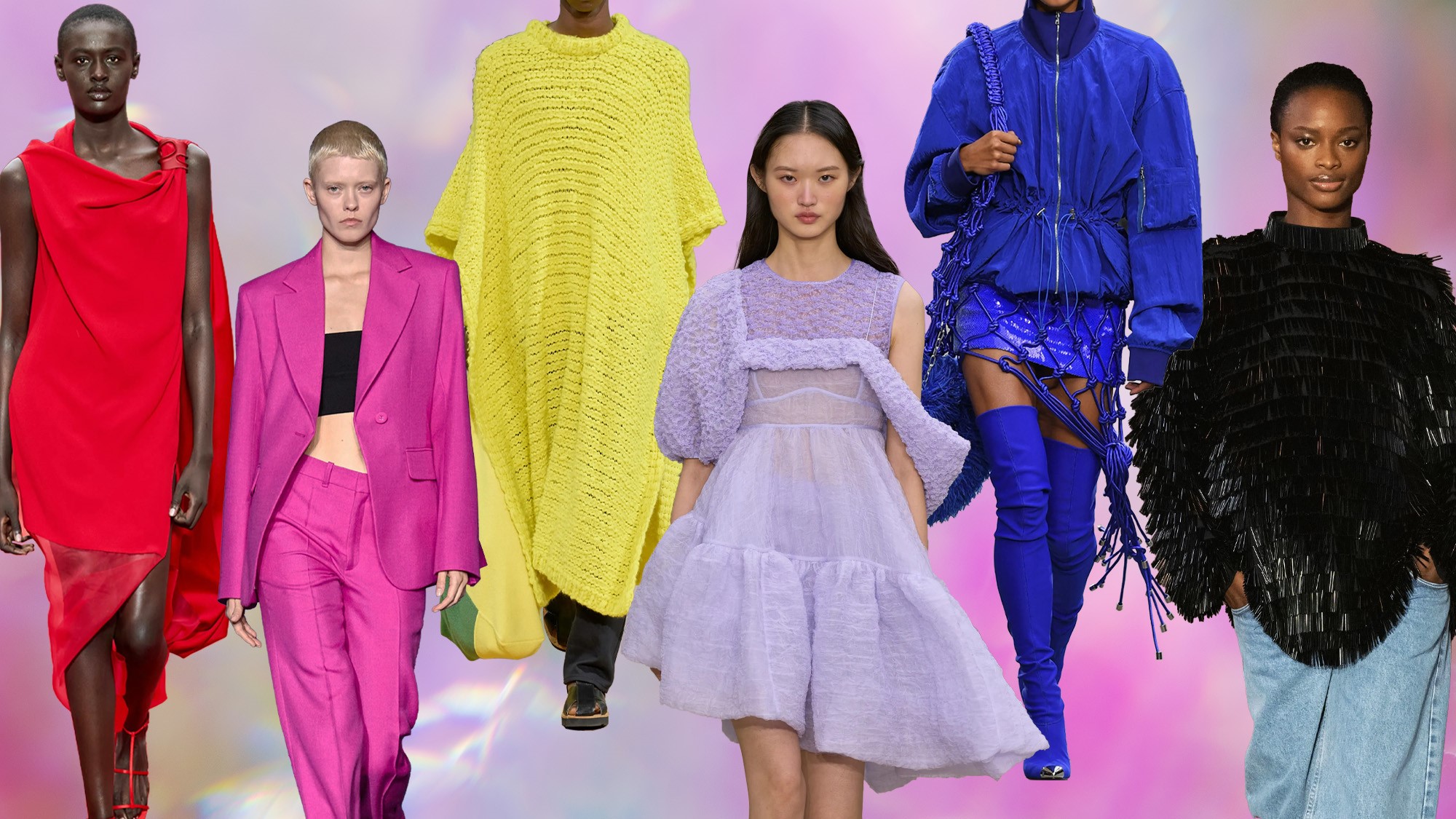Introduction
In the year 3000, color trends in fashion have transcended traditional pigments and fabrics, evolving into dynamic expressions of technology, emotion, and identity. Clothing is no longer static—advanced materials allow colors to shift in real time based on the wearer’s mood, environment, or social context. Iridescent hues, bioluminescent fabrics, and emotion-sensitive tones define the visual language of fashion, with palettes often inspired by cosmic phenomena, planetary climates, and digital dreamscapes.
- Key Drivers of Color Trends in 3000
- Technological Integration
- Programmable Fabrics: Clothes will be made from nanofibers that can shift colors in real-time, responding to environmental conditions or mood.
- Quantum Pigmentation: Quantum dots embedded in fabrics can refract light into any color spectrum, allowing infinite possibilities.
- Augmented Reality (AR) Fashion Layers: Virtual garments will overlay physical ones, allowing wearers to change color at will without altering the base material.
- Environmental Considerations
- Bioluminescent Fabrics: Inspired by deep-sea organisms, color may be generated organically without chemical dyes.
- Photosynthetic Color: Garments could include algae or bacteria that adjust their hue based on light, temperature, and carbon capture.
- Psychological and Emotional Interaction
- Mood-Adaptive Wearables: Outfits that change color based on neurochemical signals or biometric feedback, helping communicate emotions nonverbally.
- Social Synchronization: Group or community color palettes could link people emotionally or politically—think wearable mood rings for entire cities.
- Cultural Convergence and Aesthetic Expansion
- As interplanetary cultures merge, color associations (red for Mars, blue for Earth, for example) will influence palettes.
- Fashion houses may design with hyperspectral colors—wavelengths outside the visible spectrum that can only be perceived using augmented vision.
III. Dominant Color Trends of 3000
Here are speculative trends with imagined names and roles in fashion:
| Trend Name | Color Characteristics | Symbolism | Technological Source |
| Plasma Prism | Iridescent shifting pastels with plasma glow | Freedom, fluid identity, energy | Programmable fiber optics |
| BioFlora Green | Organic greens and ambers from photosynthetic materials | Rewilding, sustainability, healing | Algae-integrated textiles |
| NeuroPulse Violet | Electric violets and deep indigos with biometric shimmer | Intuition, psychic tech, connectivity | Neuro-reactive fabrics |
| Void Black 9 | Absorbs 99.999% of light, with motion-reactive shadows | Elegance, invisibility, power | Quantum-black smart fabric |
| SolarFlare Orange | Bright, fiery oranges that shift with solar exposure | Solar power, visibility, energy independence | Thermochromatic fibers |
| Synthetic Seraphim | Ethereal whites with a holographic halo | Transcendence, spirituality, digital purity | Light-bending polymers |
- Fashion as a Color Interface
By 3000, fashion won’t just display color—it will communicate, interact, and transform using color:
- Emotional Diplomacy: Uniforms for diplomats may change hues to reflect emotional transparency.
- Cultural Tags: Individuals from different planetary colonies or digital societies may wear unique chromatic signatures.
- Dynamic Camouflage: Clothes that adapt to environments not only for hiding but also for social signaling.
- Psychological and Societal Implications
- Color as Language: In a society where AI interprets color shifts, clothing could be a primary language for those with neurodivergence or non-verbal communication needs.
- Color Hierarchies: As with royal purple in ancient times, rare or difficult-to-program colors might be status symbols.
- Post-Human Identity: As humans merge with AI and cybernetic forms, fashion might adopt spectral, synthetic, or multi-dimensional color systems not tied to human perception.
- Fashion in Non-Earth Environments
- Lunar Luminescence: Reflective silvers and whites used in low-light environments.
- Martian Reds and Golds: Suits designed to harmonize with Mars’ surface and sky, integrating protection with aesthetics.
- Space-Visible Fashion: Outfits designed to be seen from orbit or spacecraft, using ultra-bright, high-contrast color patterns.
VII. Color in Virtual and Hybrid Realities
- Meta-Palettes: Users select custom color environments for their avatars that bleed into real-world fashion using AR glasses.
- Neural-Aesthetic Design: AI co-designers will generate color schemes based on brain scans and memory associations, creating highly personalized palettes.
